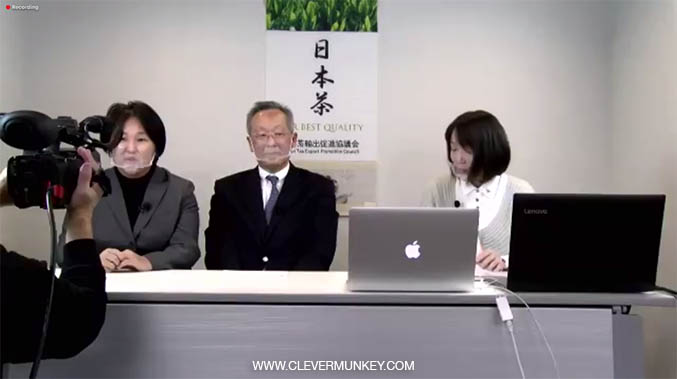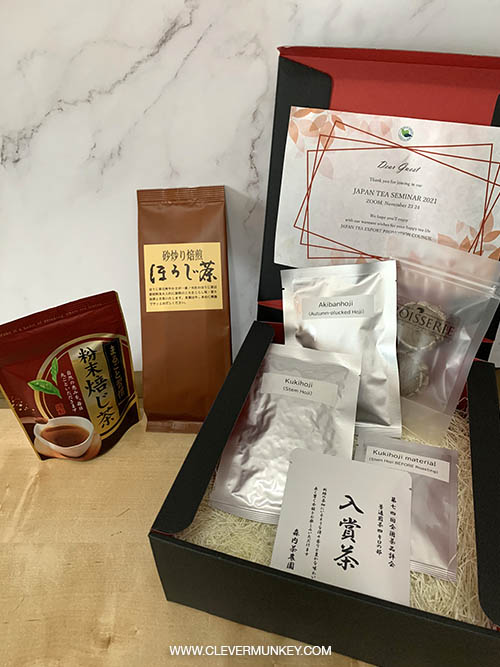Not long ago, I had the opportunity to learn and experience the highest grade of Japanese green tea leaves from one of the best tea experts from Japan via a Zoom virtual experience event. The tea expert, Hiroyuki Yamanashi is the CEO of the company – Yamanashi Shoten and he has developed various types of tea over the years. One of his achievements is the first Enzyme fermented tea 「La香茶シリーズ」. He Obtained a manufacturing method paten, and people started to call him the “Tea Professor”.
CEO Hiroyuki Yamanashi was born in 1953 in Shizuoka, Japan.
The Shizuoka Prefecture has a long history of producing high quality green tea and is one of the largest tea producing regions in Japan accounting for over 40% of the country’s overall tea production. With an ideal climate between 14-16 degree and its diverse topography, the area is perfect for cultivating the best quality and delicious tasting Japanese green tea.
Most tea farms in Shizuoka are family-owned and harvest are still done by hand, ensuring only the best tea leaves are picked and sent for processing. A popular method of processing is through roasting of the tea leaves to produce a distinct toasty flavour that most of us know as Hoji Cha.
The production of Hoji Cha is a precise process requiring the tea leaves to be roasted at a very high temperature to bring out the umami flavour of the tea. This part of the tea processing, heating, and packaging is usually done by a wholesaler rather than the tea farmers, who prefers to focus on the tea cultivation and harvesting. The expertise required for this process takes many years to perfect and thus, there are not many Hoji Cha manufacturers. In Shizuoka, there are roughly 500 tea wholesalers but only 15 producers specialised in Hoji Cha and overall, in Japan, there are maybe 50 companies producing Hoji Cha for the market.
At the virtual experience event, we are introduced to a lot of new knowledge on how Hoji Cha is roasted and method of brewing.
We got a package filled with various tea for the virtual event and we can try and enjoy different Japanese tea at the comfort of our own home.
Our first brewing session was the Kukihoji where we scoop 4 tsp of the tea and pour 100cc of hot water into the pot which is just right under the teapot handle. Wait for 30 seconds and then pour it into the tea cup to serve. I quite like the taste of this tea. It's aromatic, light and has a clean after taste which I think is suitable to drink in the evening.
Other than drinking it hot, we can also drink it cold by adding sugar syrup / melted sugar, cut fruits such as mango and top with carbonated water or soda. For this, the tea leaves need to be steeped for 3 minutes. It's definitely a perfect drink for a hot sunny day. Yums~!
 |
| Here are some of the tea leaves being introduced by tea expert, CEO Hiroyuki Yamanashi |
A well-known manufacturer in the area, Yamanashi Shoten produces a variety of Hoji Chas, from the highest grades of Hoji Cha – Kuki Hoji Cha (which uses leaves from the first harvest) to a more commonly used Hoji Cha – Akiban Hoji Cha (made from autumn harvest leaves). The younger leaves when roasted would produces a soft golden colour and provides a good balance of umami and sweetness.
The health benefits of Hoji Cha are slightly different from other Japanese teas:
• Lower calories compared to green tea and coffee.
• As the tea is roasted at a very high temperature, it increases the level of pyrazine, a chemical found in tea which helps improves blood circulation and keeps you warm and relaxed.
• It has low caffeine content making it an ideal drink to have before going to bed.
All the teas presented at the virtual experience event can be purchased through Secai Marche online store at https://secai-marche.com/buyer/main/top.
* * *
Stay up to date with our latest event news, food or product reviews and travel adventures by following our social media platforms below:-
Facebook: www.fb.com/CleverMunkey
Instagram: www.instagram.com/CleverMunkey
Twitter: www.twitter.com/CleverMunkey
.: Peace Out :.








Comments
Post a Comment
Thank you for the visit and your kind comments! <3